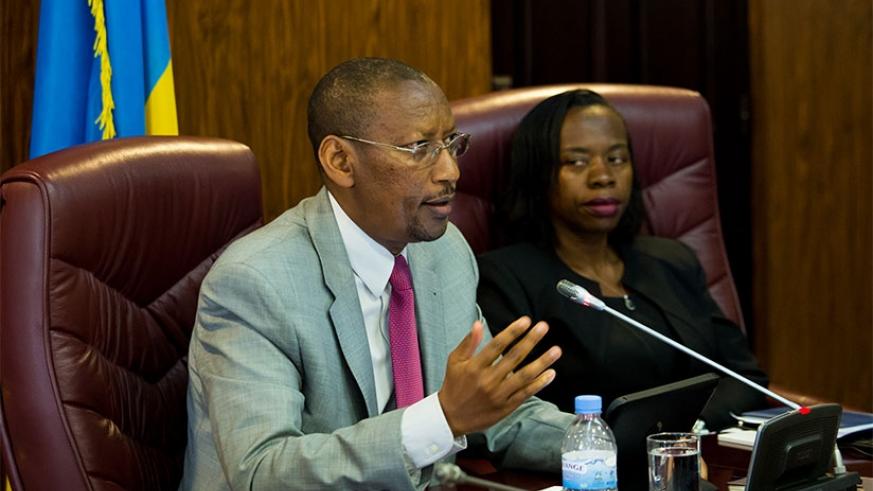

The Central Bank has maintained the key repo rate at 5.5 per cent to encourage the banking sector to continue financing the economy.
The key repo rate is rate at which the central bank lends to commercial banks.
The decision to maintain the rate was announced by Governor John Rwangombwa of the National Bank of Rwanda, following yesterday’s Monetary Policy Committee meeting.
The rate was revised to 5.5 per cent, from 6.0 per cent, in December last year, in a move to encourage local financial institutions to reduce the rates at which they lend to public.
Lowering the rate creates a scenario whereby banks make more returns by investung with the private sector as opposed to when they invest with the central bank.
Among the reasons that led the central bank to maintain the rate include the performance of the external sector in the first two months of the year with exports value growing by 31 per cent and imports rising by about 13.2 per cent, Rwangombwa said.
The growth in imports is likely to see an increase in import duty after months of stagnation.
Rwangombwa explained that imports rise is driven by consumer and intermediate goods.
The committee also noted that inflationary pressures remained low, at 1.3 per cent in January and 0.7 per cent in February this year compared to about 8.1 per cent in February last year.
The move to revise the repo rate in December last year seems to have had a positive impact, with credit to the private sector increasing by 9.3 per cent in February.
Rwanda’s financial sector is expected to see increased lending to the private sector with the Central Bank estimating a 13 per cent growth (in credit to the private sector) in 2018.
In 2017, local banks issued loans valued at Rwf1,579 billion, up from Rwf1,403 billion in 2016.
Economic recovery and increased activity is expected to drive increased lending in 2018.
At least 14 out of the 17 local banks say they expect improved lending in 2018.
Analysts say that among the sectors expected to absorb the most loans are infrastructure and energy, given their high funding needs and scheduled projects.


